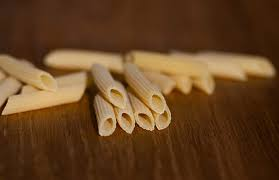Many supermarket brands are now producing ridged pasta for your enjoyment
If you've been paying attention to culinary trends over the last decade, you've probably heard the term "Bronze Cut" tossed about in the pasta aisle. Packages featuring these terms typically cost 50-100% more than the store-brand equivalent.
However, as the major supermarket chains attempt to enhance their private brands, I've noticed the term appearing on the shelves of ALDI and Kroger, not just high-end stores. I can now buy a pound of fettuccine cut with this specific alloy for a decreasingly affordable price.
But what exactly does "bronze cut" or "bronze die" mean? Is this just another marketing buzzword like "artisanal" or "all natural"? Here's a basic rundown of the pasta craze.
When it comes to pasta, the ancient techniques are typically the finest
The distinction is straightforward, and it all boils down to output. The majority of store-bought noodles are not rolled in a factory. Rather, the dough (typically semolina) is extruded through a number of metal dies. Bronze was formerly the material of choice for these dies, according to history, until slicker materials like Teflon reached the market.
Unfortunately, this progress came at a cost. Consider the spaghetti you ate as a child; chances are you remember super-smooth noodles. These are good for art projects and school meals, but many manufacturers have returned to bronze in recent years.
Why? According to conventional culinary wisdom, bronze dies generate pasta with a slightly rougher texture, and these surface ridges help your spaghetti to reach out and grip onto the sauce. For decades, the food media has written about this, and there are several videos on the internet professing to illustrate the tremendous effect that bronze-cut pasta has on the finished result. Even if you look at the package at the store, you can detect the difference.
The Difference Between Bronze-Cut and Modern Pasta
The distinctions aren't simply superficial—the science is a little more nuanced. Another prominent food YouTuber (with some academic backing) illustrates in this video that, while the coarser, bronze-cut pasta retains somewhat more sauce, the difference is more minor than we might assume.
So, is bronze's superiority just another culinary urban legend? No, since there are other variables at work here. Researchers think that the rougher texture of these noodles helps them to release more starch into the boiling water, resulting in a richer sauce when a ladle of this pasta water is added during the final simmer. Some say that the sauce not only adheres better on a bronze-cut noodle, but also penetrates the uneven surface more easily.
Related Topics:
In any case, pasta extruded via bronze dies has become my preferred product. Whether or whether its rougher surface is proved to contain more sauce, the increased roughness is immediately noticeable when you take a mouthful. Consumer brands are frequently chastised (sometimes rightfully) for their cost-cutting and shrinkflation. When it comes to pasta, however, "bronze cut" appears to be a rare case of producers delivering a really superior product at a mass-produced price.
SOURCE
What do you think of this blog? Write down at the COMMENT section below.



No comments:
Post a Comment